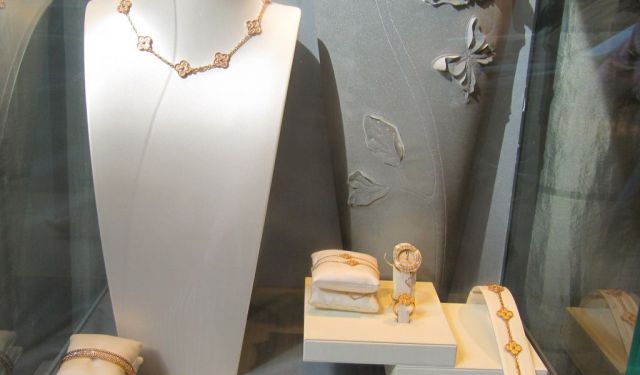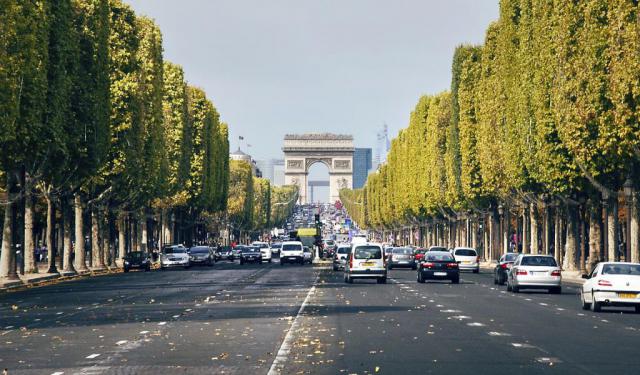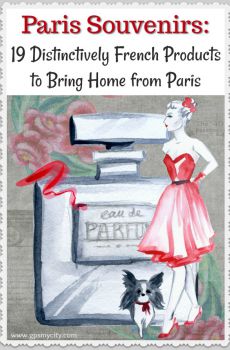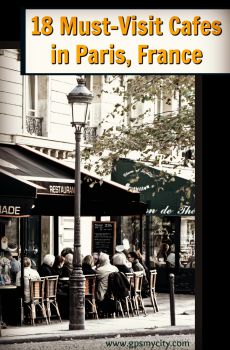
Hotel de Ville (City Hall), Paris
The City Hall of Paris, overlooking its namesake square, is the largest city hall building in Europe. Historically central to Parisian life, this location has been the city’s administrative hub since 1357 when the provost of merchants purchased the site intending to make it a public gathering space. Curiously enough, the early sessions of the Paris municipal council were held at the home of a city mayor – the practice continued until the 16th century when King Francis I ordered a purpose-built edifice for that. The Renaissance-style building's south wing was commissioned in 1535. Later, it was joined by the north wing, in 1605, under Henry IV and Louis XIII.
As the French Revolution headquarters, the City Hall accommodated Maximilien Robespierre and his supporters. Ironically, it was here that Robespierre himself was arrested in 1794, at the end of the infamous Rule of Terror period, during which anyone opposing the revolution was sent to the guillotine.
In 1835, the building was expanded to accommodate the growing city government. However, during the Franco-Prussian War and the Paris Commune, it once again became a stage for political upheaval, culminating in its near-total destruction. During the final days of the Paris Commune, when their defeat was imminent and the French army closed in on the building then used as the Paris Commune headquarters, the Communards set it ablaze, completely destroying everything inside, including the city archives.
Reconstruction between 1874 and 1882 adhered to the original Renaissance-style exterior, while the interior had to be created anew, including lavish ceremonial rooms decorated with murals by noted artists. The façade featured 108 statues by prominent sculptors, including Auguste Rodin, who created the likenesses of famous Parisians such as philosophers Voltaire and Jean-Jacques Rousseau, writer Charles Perrault (author of "The Sleeping Beauty", "Little Red Riding Hood", and "Cinderella"), sculptor Jean-Baptiste Pigalle, and many others. Another thirty statues here represent French cities. The clock at the central tower is also adorned with statues – several female sculptures depicting the river Seine, the city of Paris, the “Work,” and the “Education”.
In the 20th century, the City Hall witnessed Charles de Gaulle’s Liberation speech in 1944. In recent years, the Mayor of Paris opened the building to public events including the annual White Night festival. The City Hall also played a role in the 2024 Olympics, hosting the start of the marathon.
While public access to the City Hall is generally restricted, there are two rooms in the building constantly allocated to art exhibitions: one for photography, and one for art in general. Also, there are almost always some cultural events taking place outside, in the square in front of the building.
As the French Revolution headquarters, the City Hall accommodated Maximilien Robespierre and his supporters. Ironically, it was here that Robespierre himself was arrested in 1794, at the end of the infamous Rule of Terror period, during which anyone opposing the revolution was sent to the guillotine.
In 1835, the building was expanded to accommodate the growing city government. However, during the Franco-Prussian War and the Paris Commune, it once again became a stage for political upheaval, culminating in its near-total destruction. During the final days of the Paris Commune, when their defeat was imminent and the French army closed in on the building then used as the Paris Commune headquarters, the Communards set it ablaze, completely destroying everything inside, including the city archives.
Reconstruction between 1874 and 1882 adhered to the original Renaissance-style exterior, while the interior had to be created anew, including lavish ceremonial rooms decorated with murals by noted artists. The façade featured 108 statues by prominent sculptors, including Auguste Rodin, who created the likenesses of famous Parisians such as philosophers Voltaire and Jean-Jacques Rousseau, writer Charles Perrault (author of "The Sleeping Beauty", "Little Red Riding Hood", and "Cinderella"), sculptor Jean-Baptiste Pigalle, and many others. Another thirty statues here represent French cities. The clock at the central tower is also adorned with statues – several female sculptures depicting the river Seine, the city of Paris, the “Work,” and the “Education”.
In the 20th century, the City Hall witnessed Charles de Gaulle’s Liberation speech in 1944. In recent years, the Mayor of Paris opened the building to public events including the annual White Night festival. The City Hall also played a role in the 2024 Olympics, hosting the start of the marathon.
While public access to the City Hall is generally restricted, there are two rooms in the building constantly allocated to art exhibitions: one for photography, and one for art in general. Also, there are almost always some cultural events taking place outside, in the square in front of the building.
Want to visit this sight? Check out these Self-Guided Walking Tours in Paris. Alternatively, you can download the mobile app "GPSmyCity: Walks in 1K+ Cities" from Apple App Store or Google Play Store. The app turns your mobile device to a personal tour guide and it works offline, so no data plan is needed when traveling abroad.
Hotel de Ville (City Hall) on Map










Sight Name: Hotel de Ville (City Hall)
Sight Location: Paris, France (See walking tours in Paris)
Sight Type: Attraction/Landmark
Guide(s) Containing This Sight:
Sight Location: Paris, France (See walking tours in Paris)
Sight Type: Attraction/Landmark
Guide(s) Containing This Sight:
Walking Tours in Paris, France
Create Your Own Walk in Paris
Creating your own self-guided walk in Paris is easy and fun. Choose the city attractions that you want to see and a walk route map will be created just for you. You can even set your hotel as the start point of the walk.
The French Revolution Landmarks Walking Tour
The French Revolution had a huge impact on France's history as it gave rise to a radical democratic republic and resulted in quite a bit of violence during the infamous "Reign of Terror". Even though many of Paris’ buildings were damaged in the course of the bloody conflicts, the sites they occupied – which you can find on this self-guided tour – are of a great historical... view more
Tour Duration: 3 Hour(s)
Travel Distance: 7.3 Km or 4.5 Miles
Tour Duration: 3 Hour(s)
Travel Distance: 7.3 Km or 4.5 Miles
Le Marais Walking Tour
Once a bourgeois area and still a major center of the Paris Jewish community, the Le Marais district is one of the hippest neighborhoods in the city. Boasting a wealth of narrow medieval streets, unique boutiques, and quirky establishments, it represents an eclectic blend of historical sites and the bustling energy of today.
Start your acquaintance with the area at Paris's City Hall – a... view more
Tour Duration: 1 Hour(s)
Travel Distance: 2.4 Km or 1.5 Miles
Start your acquaintance with the area at Paris's City Hall – a... view more
Tour Duration: 1 Hour(s)
Travel Distance: 2.4 Km or 1.5 Miles
Souvenirs Shopping Walk
Being one of the world's premier shopping destinations, the French capital attracts thousands of shopaholics every year. Even those who hate shopping, enjoy doing it here. Renowned for its luxury and sophistication, Paris is a great place for finding unique and elegant souvenirs to cherish. Here are some must-visit places for souvenir shopping in the City of Light.
Lafayette Galleries... view more
Tour Duration: 2 Hour(s)
Travel Distance: 5.0 Km or 3.1 Miles
Lafayette Galleries... view more
Tour Duration: 2 Hour(s)
Travel Distance: 5.0 Km or 3.1 Miles
Champs-Elysees Walking Tour
On this self-guided walk you will witness the grandeur of the 8th arrondissement of the French capital – one of its busiest and chic neighborhoods, thanks to the presence of Avenue des Champs-Elysées, Arc de Triomphe, and Place de la Concorde.
Your best plan would be to start with the Triumphal Arch and walk up to its viewing area for great sights down the Champs-Élysées – a lovely... view more
Tour Duration: 2 Hour(s)
Travel Distance: 4.7 Km or 2.9 Miles
Your best plan would be to start with the Triumphal Arch and walk up to its viewing area for great sights down the Champs-Élysées – a lovely... view more
Tour Duration: 2 Hour(s)
Travel Distance: 4.7 Km or 2.9 Miles
St-Germain-des-Pres Walking Tour
This self-guided walk takes you to explore the 6th arrondissement, covering the quarter of St-Germain-des-Prés, the riverside districts and the areas nearby the Luxembourg Garden. It is one of the most expensive districts of Paris, home to posh boutiques, eateries and iconic cafes once favored by philosophers and legendary writers, the likes of Hemingway and Camus. The area is likewise renowned... view more
Tour Duration: 2 Hour(s)
Travel Distance: 2.8 Km or 1.7 Miles
Tour Duration: 2 Hour(s)
Travel Distance: 2.8 Km or 1.7 Miles
Latin Quarter Walking Tour
The Latin Quarter of Paris, nestled on the Left Bank of the Seine, is a district steeped in academic history and artistic fervor, resonating with the echoes of scholarly discourse and bohemian lifestyle. This venerable area derives its name from the early use of Latin as the lingua franca in the universities, a tradition spearheaded by the Sorbonne University. This institution has shaped... view more
Tour Duration: 2 Hour(s)
Travel Distance: 2.8 Km or 1.7 Miles
Tour Duration: 2 Hour(s)
Travel Distance: 2.8 Km or 1.7 Miles
Useful Travel Guides for Planning Your Trip
Top 16 Vegetarian Restaurants in Paris
The French have great respect for the fresh, organic produce yet France isn’t famous for its vegetarian cooking. Hence it’s a good idea for vegetarian visitors to Paris to come prepared in advance. This guide shows you places around the city which serve vegetarian food, complete with the...
10 Unusual Things to Do in Paris, France
If you've visited Paris, you've probably seen the Eiffel Tower, Notre Dame, and Versailles. You probably whizzed through some world-class art, ate delicious food in restaurants with English menus, and bought crepes from a street cart. However, Paris has a lot of things to do that...
8 Best Food Markets in Paris for Authentic French Produce
The image of Parisians that you may have in your head as strolling through a colourful market with a basket on their arm, chatting to vendors and picking up fresh produce, is quite accurate. Most Parisians do visit local markets at least once a week to stock up on the freshest fruit, vegetables,...
9 Must Try Cafes in Paris
Discovering the best coffee and cafes in Paris can be difficult. The city is filled to the brim with brasseries and cafes, but very few offer the Anglophone standard of a good cup of coffee. This is a guide to inform tourists and Parisians alike of the new and somewhat established cafes in Paris...
Paris Souvenirs: 19 Distinctively French Products to Bring Home from Paris
You can hardly have enough money and luggage space to get all the takes your fancy in Paris. Luckily, with a little bit of tasteful advice and experience, you can save yourself some time and effort and pick up just about the right amount of things worth taking home. Listed here are some of the hints...
18 Must-Visit Cafes in Paris, France
Paris is home to thousands of cafes; there is a café on practically every street corner you turn, in every square you stumble across, on every boulevard you stroll along. The age-old Parisian tradition of sitting around at rickety tables and shooting back espressos is a fundamental part of everyday...












